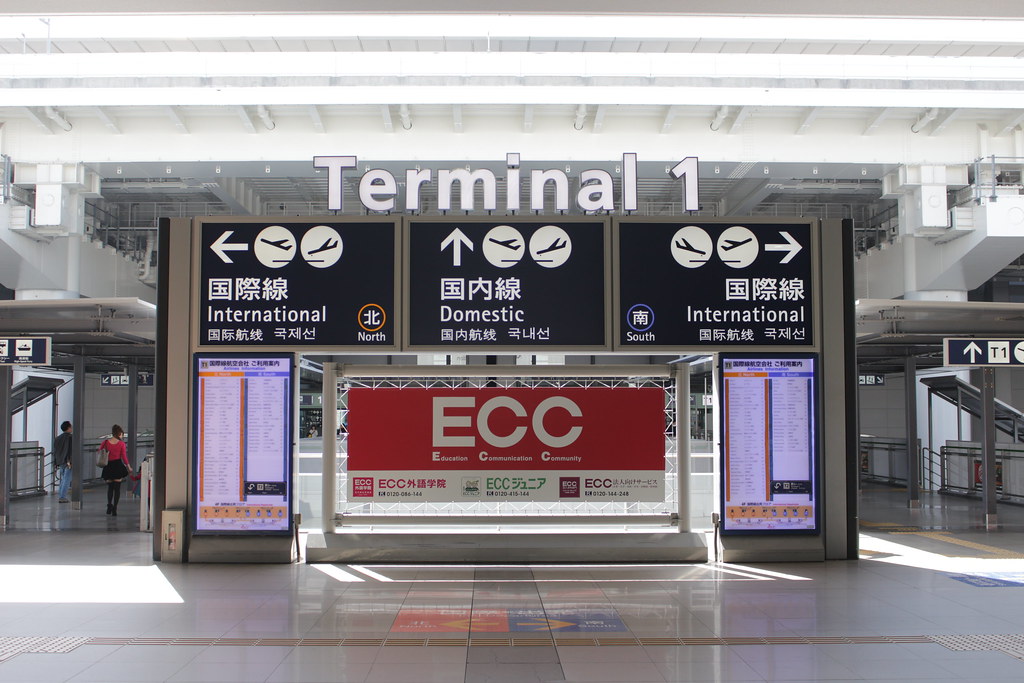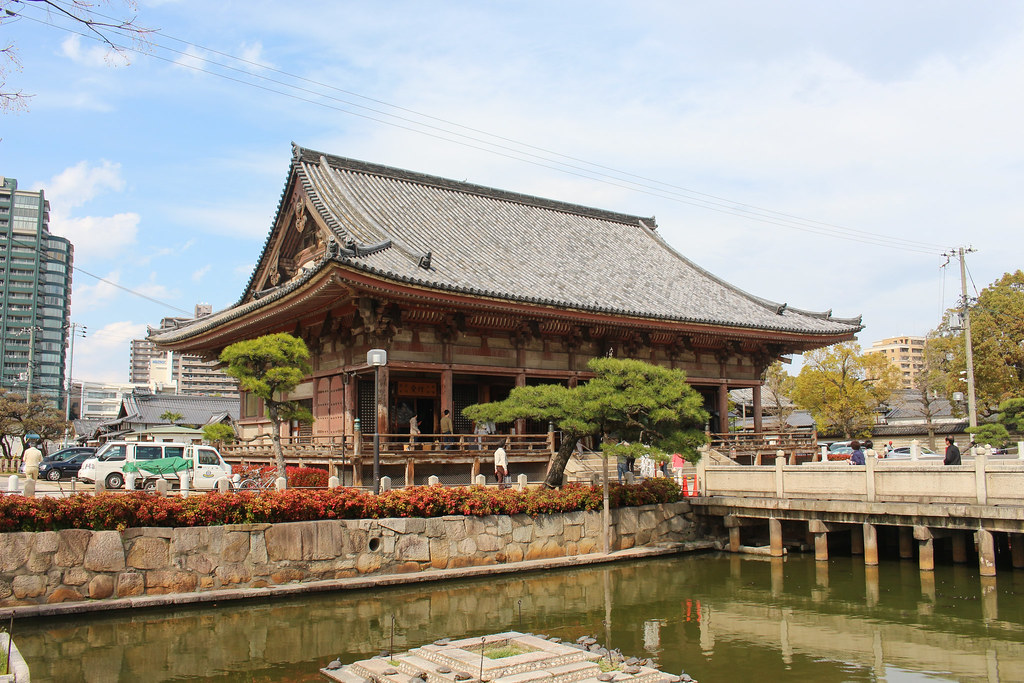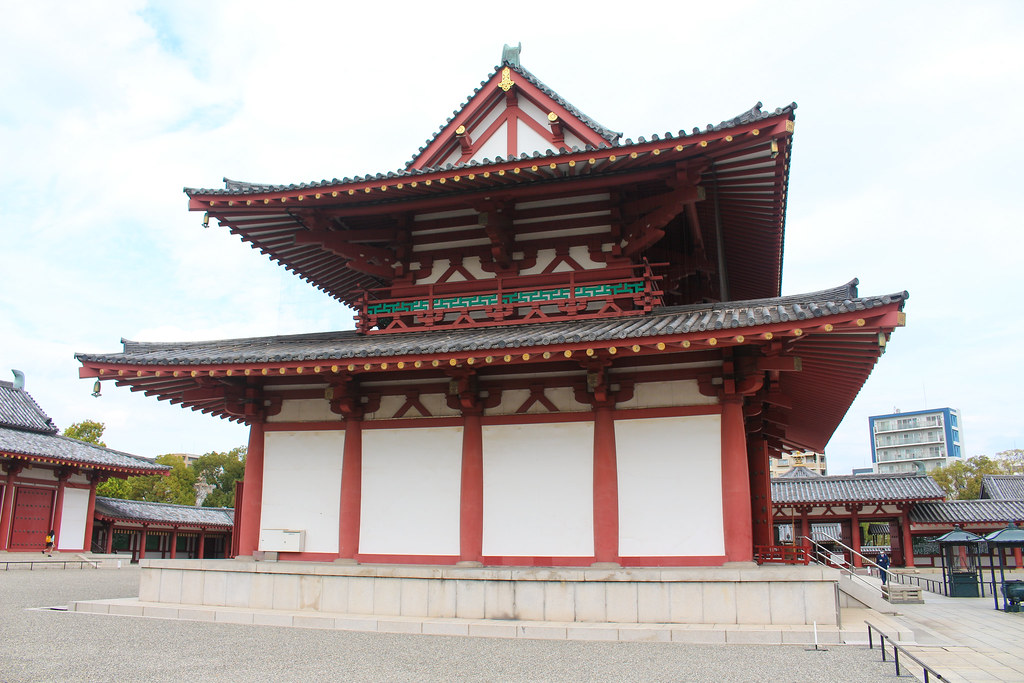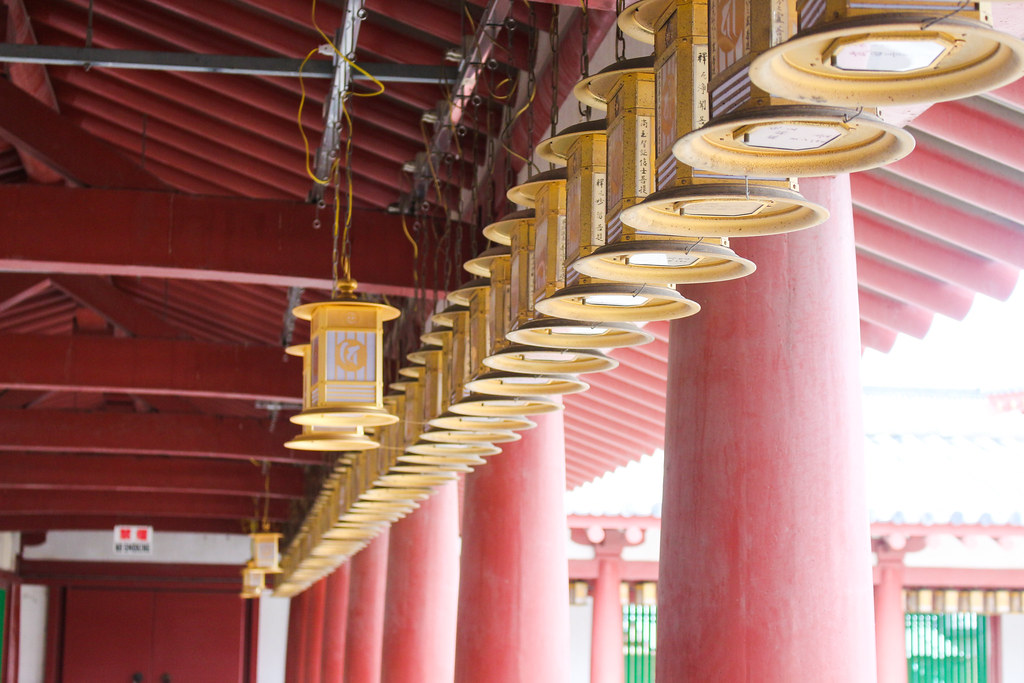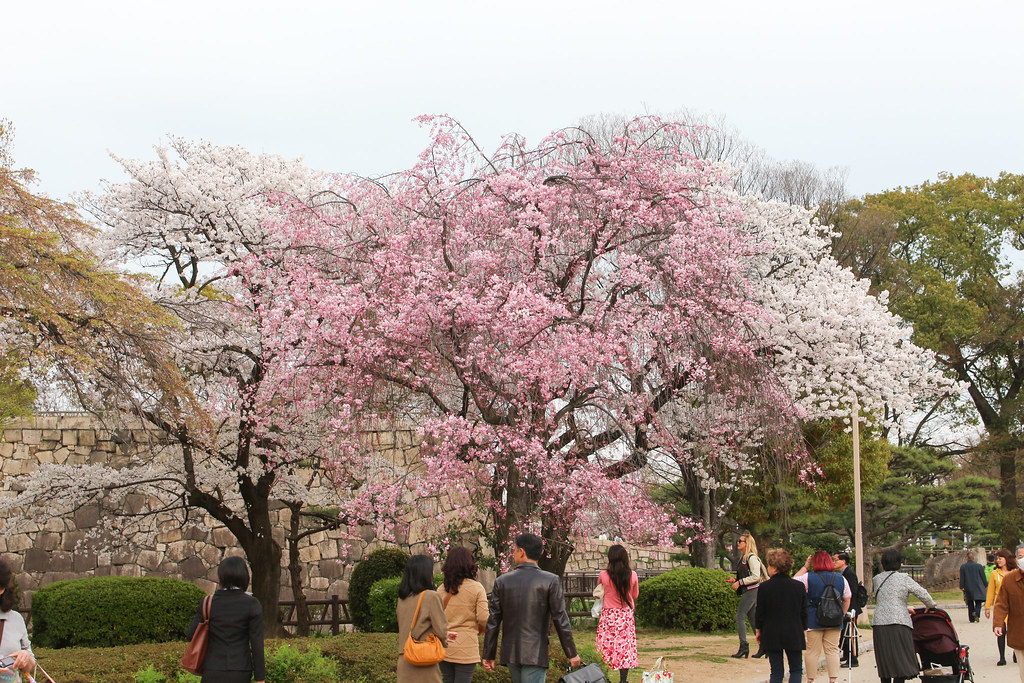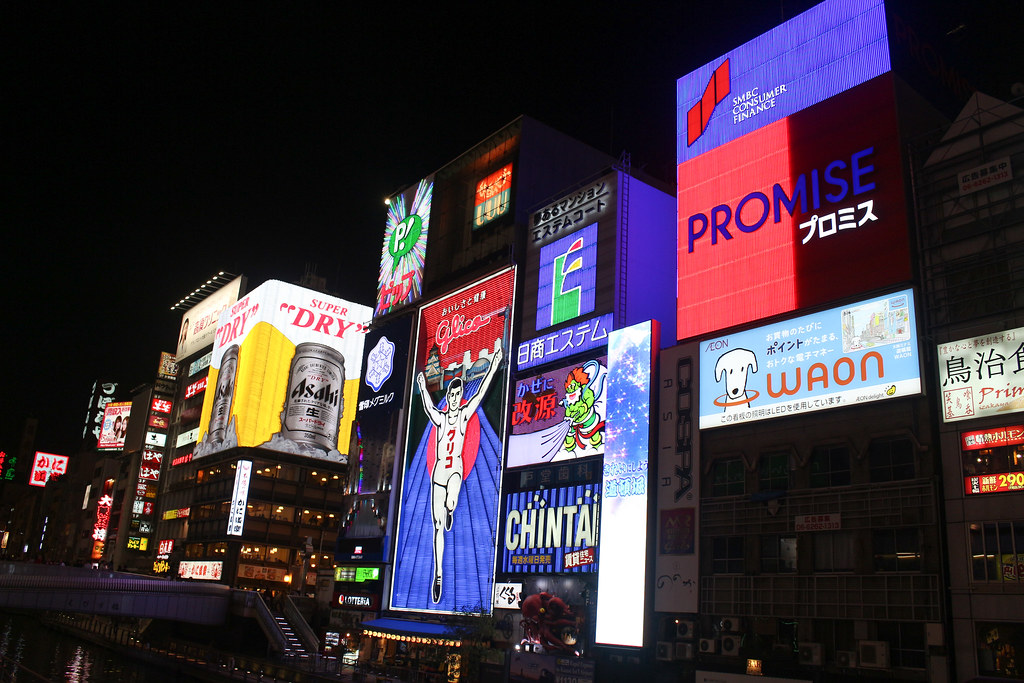April 02, 2014 – Finally! A trip to the Land of the Rising Sun envisioned since last year is here! どきどきします~! I am going there with a friend of mine, on a 10 days 9 nights trip and this is the first fully self-planned trip. Posts in this series will be long as I intend to record my journey and experiences in Japan as detailed as possible. Please feel free the skip the sections you have less interest in and enjoy the photos. 😀


The journey started with a red eye flight on April 2nd, 2014 from the Kuala Lumpur Low Cost Carrier Terminal (LCCT) to Kansai International Airport / 関西国際空港 (KIX) in Osaka, Japan. Our flight departed about 10 minutes behind the scheduled time at 01:10AM MYT, but arrived at KIX at 07:50AM JST, which was 35 minutes ahead of the planned touchdown. But the time was evened out as we are greeted by a super long queue at the immigration. I barely slept on the flight which made the queue felt even longer.

After the usual procedures, we went to the Kansai Tourist Information Center at the first floor of the International Arrivals Hall at Terminal 1 of KIX to purchase the 2-Days Osaka Amazing Pass, which provides unlimited rides on Osaka City subways, trams and buses for 2 consecutive days, as well as free entrance tickets to 28 attractions listed on the booklet provided. All of these for 3000 JPY, not a bad deal at all.

We then proceed to the 2nd floor, walk through the access bridge to the train terminal. For those who are not familiar with the Kansai Airport, it is located on a man-made island at the Osaka Bay, and is about 60 minutes away from central Osaka by train. There are a few different ways that you can get from the airport to the city center, but our first choice was to purchase the ICOCA-HARUKA discounted package, which includes an one-way or roundtrip ticket between the airport and central Osaka, as well as a JR West IC transportation card – the ICOCA, inclusive of a 500 JPY deposit and preloaded with 1500 JPY credit. All of these can be purchased with 3030 JPY if you get the one-way package, which is a good deal as the one way fare from KIX to Shin-Osaka on the HARUKA Airport Limited Express train already costs 2330 JPY for an unreserved seat.
Unfortunately the Japan Railway office at KIX was fully packed and we were unable to purchase the package. Hence we went for plan B instead, entering the city via Nankai Airport Express trains. The tickets can be purchased at their office beside the JR’s office.





When we got off on the Namba Station, we were kinda lost and looking up and down for the subway station. An middle-aged man which was on the Nankai Airport Express with us overheard us speaking in Mandarin and asked where we came from. Turns out that he is also from Malaysia. He was in Japan to visit his friend and is heading to the Shinsaibashi / 心斎橋 station which is on the same subway line that we are heading to. He been here previously and quite familiar with the place. He then kindly asked us to tag along with him and showed us how to get to the subway station.
We followed the man to the Midosuji Line / 御堂筋線 Subway, and we are greeted by a big crowd of commuters in the train this time. He got off the train on the next station while we continue on to Umeda / 梅田.

We got off at Umeda / 梅田, which is a big train station adjacent to the Osaka Station City and our head starts to spin. Which way to go?
Those who can read Chinese, you can have a look at this little comic for some laugh ^_^||

Luckily there is an information counter available, which we went and ask for directions to our hotel – Umeda OS Hotel. I did not see the counter at first, because it looks like some booth that sells sweet corns and popcorns lol!

Thanks to the ladies at the information counter, that we finally knew that our hotel is not at the Umeda Station, but it is nearer to the Higashiumeda / 東梅田 station on the Tanimachi Line / 谷町線. So we walked about 3 minutes to reach Higashiumeda Station. Exiting the station via Exit #7 (or any other exit that is near to #7 and on the same side), passing a small shopping street, where we finally see our hotel.
- Kansai Airport Station / 関西空港 >>> Nankai Limited Express Rapi:t β >>> Namba Station / 難波 (Nankai Line / 南海線)
[1130 JPY with Reserved Seat] - Walk to Namba Subway Station
- Namba Station (Subway) / 難波 >>> Midosuji Line / 御堂筋線 >>> Umeda Station / 梅田 (Subway)
[240 JPY – Covered by Osaka Amazing Pass] - Walk to Higashiumeda Station / 東梅田 on the Tanimachi Line / 谷町線 and head to Exit #7.
The standard check-in time for hotels in Japan is generally 03:00 PM. It is only about 11:30 AM, so we left our luggages with the front desk, collected the pocket wifi device that I have pre-ordered from Wifi-Hire.com and head out on an adventure.


But before that, we need to fill our stomach that has been empty since we got off the flight. We head back into Umeda Station and look for something to munch. My friend spotted a McDonalds outlet selling seasonal limited Sakura Teriyaki Burgers, and we decided to try it out. That’s when we got a feel of the food pricing in Japan – it is not cheap at all. The regular Sakura Burger set costs 669 JPY (~20.50 MYR)! However their paper bags are so cute!
Our first destination is the Shitennoji / 四天王寺, the first Buddhist temple in Japan, which can be accessed via the Tanimachi Subway Line.
- Higashiumeda Station / 東梅田 >>> Tanimachi Line Subway / 地下鉄谷町線 >>> Shitennoji-mae Yuhigaoka Station / 四天王寺前夕陽ヶ丘
[240 JPY – Covered by Osaka Amazing Pass] - Exit via Exit #4 and walk to Shitennoji



When we saw this, we thought we arrived at the temple’s main entrance, but turned out it is a smaller entrance that leads to the Eirei-do / 英霊堂, which is north of the main temple grounds.


We spent a little time exploring, and actually kinda disappointed thinking that this was the temple ground itself. We decide to turn back to the main street and go to somewhere else.
Japan is famous for the population of their vending machines, they are literary everywhere, selling things that you can and cannot imagine of. Bought a bottle of green tea here to quench my thirst. After being in Japan for 10 days, I concluded that these are the vending machines selling drinks at the lowest price that you can find!
I can’t recall what or why, but a sudden thought came through that the main temple might be further south of our position (maybe it was the green tea :P). So we decided to walk further south and volla, a bigger entrance!

There is a plaque on the archway that says “This is where the Buddha preached, and this archway is the East Gate of Paradise”.



If you want to know more about the Shitennoji and the nitty-gritty details, please click here. The site talks about the history and the temple in a very detailed manner.

Japan has two major religions – Shinto and Buddhism. In most of the Shinto shrines and Buddhism temples that I have visited, there will be a temizuya near the entrance, before the actual shrine/temple itself. It is there for the visitors to perform a ceremonial purification rite called temizu before proceeding to stand in front of the deity.

I also noticed that a lot of Japanese bring along their doggies for a walk at parks and even temples and shrines.
From the outer temple grounds, the main temple, as well as a five-story pagoda can be seen from far. We did not proceed to the inner precinct first, but instead we explored around the outer areas of the temple, partially because we are attracted by a Sakura tree nearby.
We were very lucky to nail the best Sakura viewing period which is around the first and second week of April this year depending on locations, partially due to the information given by a senior of mine that went during the exact period in 2013. The Japan National Tourism Organization actually keeps track of the blooming of Sakura all over Japan. However I still find the one posted on Japan-Guide.com easier to read.



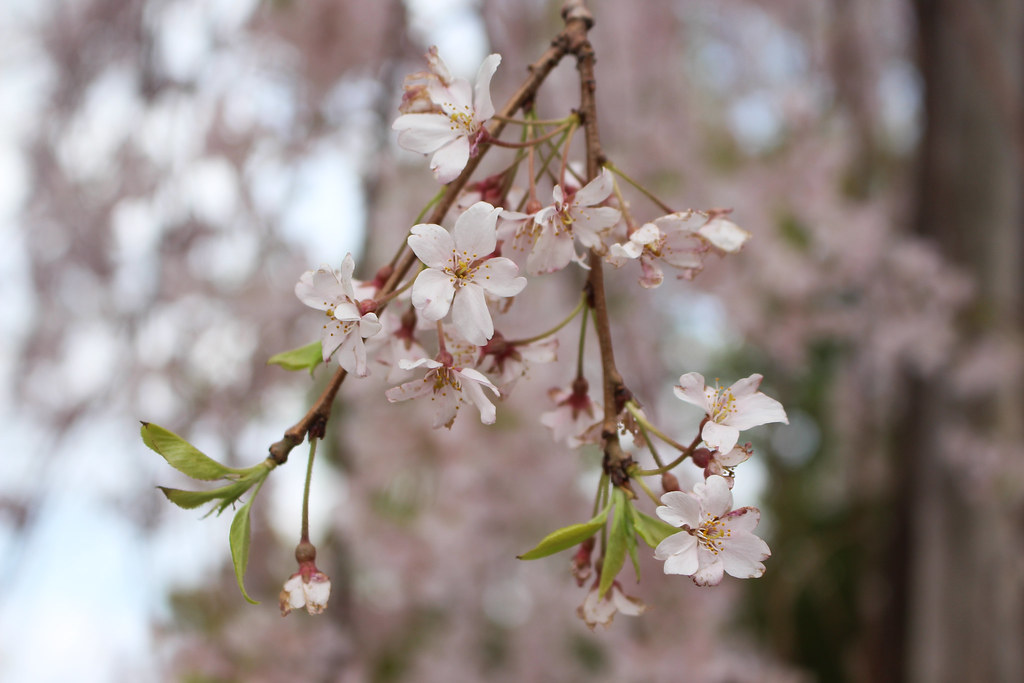 There is a rest house for visitors that sells drinks and food, we went in for a short stop, but to our surprise, there are more Sakura trees behind the rest house, along with a little pond full of Sakura petals fallen from the trees beside the pond!
There is a rest house for visitors that sells drinks and food, we went in for a short stop, but to our surprise, there are more Sakura trees behind the rest house, along with a little pond full of Sakura petals fallen from the trees beside the pond!
And… here is a panoramic view of the area, please click to enlarge.
After clicking on the camera shutter for a satisfying number of times, we moved on to the Ishi-Butai /石舞台 (Stone Stage) and Rokuji-do / 六時堂 north of the Inner Precinct.


The other main attraction of Shitennoji is the 極楽浄土の庭 / Gokuraku Jodo no Niwa which means the Garden of Paradise. It is a beautiful traditional Japanese-style garden, which according to the pamphlet given, to illustrate the two rivers of human anger and greed. The Buddhist believer will walk the narrow path in between the two rivers to find his way into Paradise. The garden has flowers, cherry blossoms, azalea, daffodils, lotus flowers, each blooming in seasons to create a true Garden of Paradise.
The entrance to the garden costs 300 JPY, which fortunately has been covered by the Osaka Amazing Pass that we purchased earlier. All they need is to scan the barcode on your Amazing Pass and in you go 🙂


After a relaxing walk in the Garden of Paradise, we head to the Garan / 伽藍 – the Inner Precinct of Shitennoji. The Garan requires a separate ticket which also costs 300 JPY. Again, this is covered by the Osaka Amazing Pass. The two main attractions here are the Kondo / 金堂 (Golden Pavilion) and the Five-Story Pagoda. The Golden Pavilion houses the statue of Prince Shotoku in his incarnation as Guze Kannon / 救世観音, surrounded by 四天王 / Shitennou (the Four Guardian Kings). Unfortunately, photos are not allowed inside the pavilion.


It was about 03:00 PM already, so we head back to the Shitennouji-mae Yuhigaoka Station / 四天王寺前夕陽ヶ丘, and take the subway to our next stop, Osaka-jo / 大阪城 (the Osaka Castle).

- Shitennoji-mae Yuhigaoka Station / 四天王寺前夕陽ヶ丘 >>> Tanimachi Line Subway / 地下鉄谷町線 >>> Tanimachi 4-chome Station / 谷町四丁目
[180 JPY – Covered by Osaka Amazing Pass] - Exit via Exit #1B and walk towards the NHK Building which will be on your right, and continue straight until Osaka-jo is in sight.




And finally, we reached the moats that surrounds the Osaka Castle at about 03:30 PM.
The moats were a protection measure built to shield the castle from enemies during the older times. To get to the castle, one must first get through the moats surrounding the castle. There was a fairly strong breeze at the time we arrived and the air was so cooling that we lingered around the area, shoot some photos and rest a bit before we move on into the castle’s outer compound.
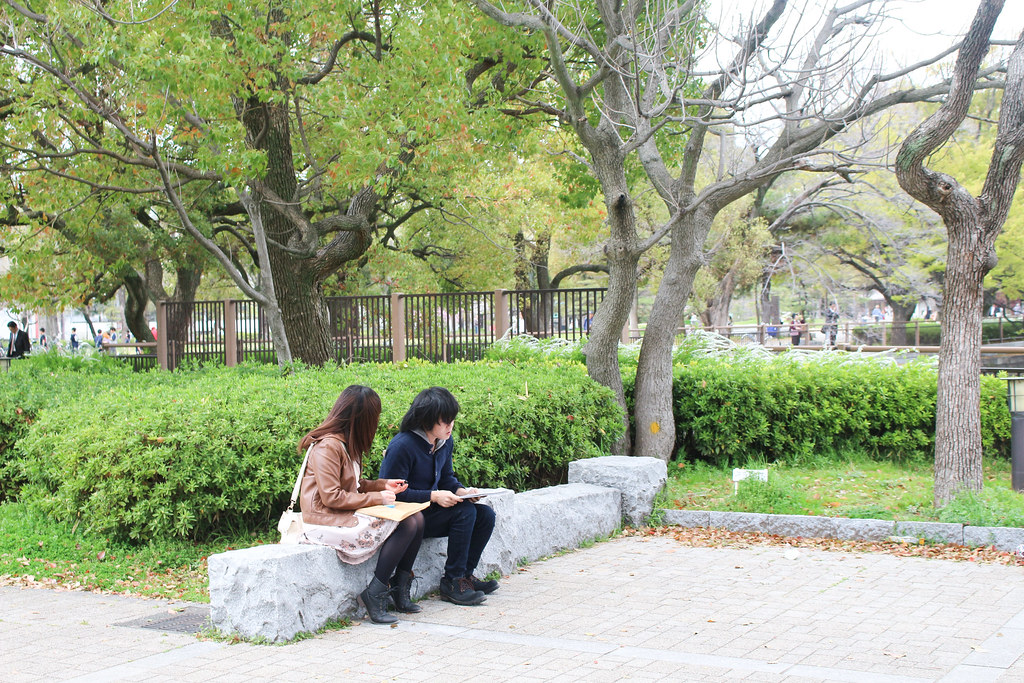


We were welcomed by a huge number of Sakura trees when we first walked into the outer castle compound. Sakuras everywhere!
What’s the feeling of having an ice cream on a chilly spring evening? Well, it turns out not too bad actually, double the cold, double the fun. I got the tasty matcha green tea ice cream from small food stalls in the castle compound, and it costs 350 JPY. I shall ignore the price as the ice cream is really creamy (not like some low grade ice cream you get) and really fills the cone completely, without any air pockets, not like what you would get when you buy a 1 MYR McD ice cream cone. 😛

As the sun begins to set, we proceed to the main Osaka Castle / 大阪城 grounds.



We proceed to the top observatory deck at the 8th floor and then work our way down. The view from the 8th floor is amazing, one can see the whole castle ground, as well as the Osaka Castle Garden down below it.

A Shachihoko is a animal from the Japanese folklore that has a head of a tiger and a body of a carp. It was believed that this animal could cause the rain to fall, and as such, temples and castles were often adorned with roof ornaments (shibi) crafted in the form of a shachihoko, in order to protect them from fire.
By the time we finished looking around in the castle, the daylight is almost gone and the castle is now bathe in a green-ish and golden lights.
It is already 07:00 PM, so we decided to head out and hunt for dinner. We decided to go to Dotonbori / 道頓堀, the place where the city comes alive during the night.
- Tanimachi 4-chome Station / 谷町四丁目 >>> Tanimachi Line Subway / 地下鉄谷町線 >>> Tanimachi 9-chome Station / 谷町九丁目
[180 JPY – Covered by Osaka Amazing Pass] - Tanimachi 9-chome Station / 谷町九丁目 >>> Sennichimae Line Subway / 地下鉄千一前線 >>> Namba Station (Subway) / 難波
- Exit via Exit #18
The first thing we look for after exiting the subway station is the famous Gilco Man neon billboard on the side of a river, as well as the famous Kani Doraku Honten / かに道楽本店 that served delicious crab dishes. However, both of these landmarks are no where to be seen, and we started to suspect that we went to the wrong direction. All we see is just some streets, some with dimmed lights and looked kinda dodgy. There was also a big Dotonbori signboard that indicates that we are near to the area, but just not the correct one.
A quick look on Google Maps suggested that we are indeed heading on the wrong direction. The Kani Doraku Honten is situated on the side of a river, and we are currently walking towards south, away from the river. We wandered around and finally, we see the Gilco Man! Right beside the Ebisu-bashi / 戎橋 (Ebisu Bridge).

Due to the familiarity of the Glico Man, Ebisu-bashi makes for a convenient gathering point, hence its nicknames, nanpa-bashi, mostly used by foreigners, and hikkake-bashi (“the pulling bridge”), mostly used by native Japanese. It may be also the reason that there are a lot of hosts and hostess there, and around the area looking for customers. But they are usually act on a lower profile and almost likely to avoid foreigners. The bridge acts as a connecting point for the Shinsaibashi-suji / 心斎橋筋 and the Ebisubashi-suji / 戎橋筋 shopping streets. The photographer for this photo provided an even comprehensive description of the bridge.
Dotonbori, and the areas surrounding it like Shinsaibashi / 心斎橋 and Namba / 難波 have a numerous number of shopping arcades or shotengais / 商店街. Unfortunately we do not have the luxury to explore each of the shopping streets, and can only read and go through the photos on them.
I can’t seem to find a equivalent to shotengais in Malaysia, and they are probably unique to Japan only. The closest I can think of, is Petaling Street or Chinatown in Kuala Lumpur, but shotengais are still different. It is usually a series of covered streets, which has a concentration of shops (e.g. supermarkets, pharmacies, convenience stores, koban / small police booth, post office, bakeries, and much more) and restaurants, and they are usually located near at least one train station. They are many shotengais in Japan, and it is a good place to see a slice of life in Japan, especially for those shotengais that are near to residential areas. See what Danny Choo says about shotengai in his post here.

The shops in the Dotonbori area features many large and interesting (weird?) signs, and some of them are even mechanized – for example the crab on the Kani Doraku restaurants. The legs of the crab moves!

My colleague who came to Osaka fall last year had insisted me to try the Hokkaido crabs in Kani Doraku. She said it was super tasty. Upon looking at the menu outside of the restaurant, we decided to pass as the price wasn’t cheap at all (a single order was about 3000 JPY and above if I remembered correctly). Now I feel a little regret that I did not went straight in. Well, the shop won’t go anywhere, I guess I will just visit it the next time I go to Japan 😀
Here is a video of the moving crab on Kani Doraku Honten.
[fve]https://vimeo.com/61665804[/fve]Saw this shop selling loads of takoyaki / たこ焼き and decided to have it as snack before we find what we want for dinner. At first I ordered the cheese takoyaki but the waiter said they are not making it now or it is sold out. So I went for the normal one, 8 pieces for 550 JPY. The takoyakis are so huge that by the time I finished all 8 of them, I already feel full lol.



My friend was still feeling hungry, so we stop by another ‘must-try’ item in Dotonbori – the Kinryuu Ramen / 金龍ラメン shop. You will know you are at the right place by looking at the flashy and catchy dragon decoration outside the store.

This particular branch adapts the open kitchen and dining style, where there are virtually no enclosed space and the dining tables and kitchen are exposed to the main street as well as the people around it. The dining tables are traditional Japanese tables and seats with tatami mats. The restaurant open 24 hours, and offers a free toppings bar with garlic, kimchi and pickles.
My friend ordered the Chashu Ramen and I decided to ‘hijack’ a bit from him. The Japanese chashu is kinda different from the Chinese style one, the meat looks cooked instead of roasted and therefore looks fairly white instead of dark brown. The other place I have tried this kind of Japanese Chashu was at Menya Musashi / 麺屋武蔵 located at Eat Paradise Isetan 1 Utama. The ramen by Kinryuu tastes good, but just like most of the food in Japan, it is very salty. Fortunately, they provide free flow of iced water for the customers.

The Sennichimae / 千日前 Shopping Arcade is just adjacent to the street where the Kinryuu Ramen shop sits on. After dinner, we went for a walk in the shopping street and walk all the way until the end of the arcade and saw the entrance to the Minami Sennichimae / 南千日前 Shopping Arcade.

It was around 09:30 PM at that time, so we decided to go back to the hotel to have a rest (not to mentioned that we have not checked in yet). I think we went into an underground passageway called the Namba Walk that connects to the Osaka Station far west of the station itself, as we find ourselves walking for about 10 minutes before reaching the Midosuji / 御堂筋 subway station.
Surprisingly at almost 10:00 PM, there are still many commuters that are travelling in the station and on the train, and there are quite a number of office workers and school students as well. We got into the train and head back to Umeda OS Hotel.
These are the areas that we explored in Namba / Dotonbori today.

- Namba Station / 難波 >>> Midosuji Line Subway / 地下鉄御堂筋線 >>> Umeda Station / 梅田
[240 JPY – Covered by Osaka Amazing Pass] - Walk to Higashiumeda Station / 東梅田
- Exit via Exit #7 or any exit that is near and on the same side.


We proceed with the check in by just showing our booking slip printed online. The room was booked on JAPANiCAN.com, and costs 7600 JPY (~252.00 MYR) a room a night. Apparently in Japan, all of the foreigners checking into a lodging are required to present their passport and the hoteliers are suppose to keep a photocopy of it as required by the Japanese law.
Obtained the keys, and we head for our room at the 10th floor. By the time we opened the door, I was surprised by how small the room actually is! By putting our luggage and other stuffs, there is barely any room for us to walk around. I was also required to put my luggage on top of my bed before I can unpack my stuffs. Also, there was no cupboard, and as expected, the bathroom is mini sized too lol. I had the mindset that the hotel rooms will be small in Japan, but seeing it first hand still surprises me. But we will be only staying at the room for one night, so it was not really a big deal.
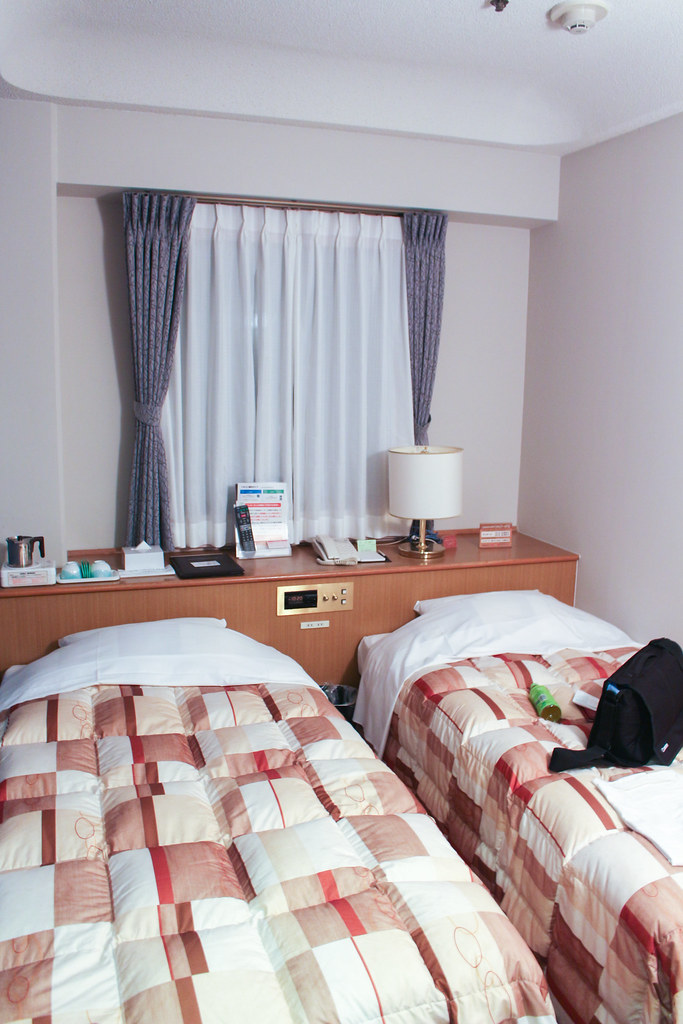
So there it is, the first day at Osaka, Japan, on a first fully self-planned trip, it was tiring, fun, confusing, that we got lost in the huge stations or on route to attractions that we were forced to use our broken Japanese to get us to our destination. Looking forward to the second day, where the sun rises again on the Land of the Rising Sun! Until then, good night! 🙂

